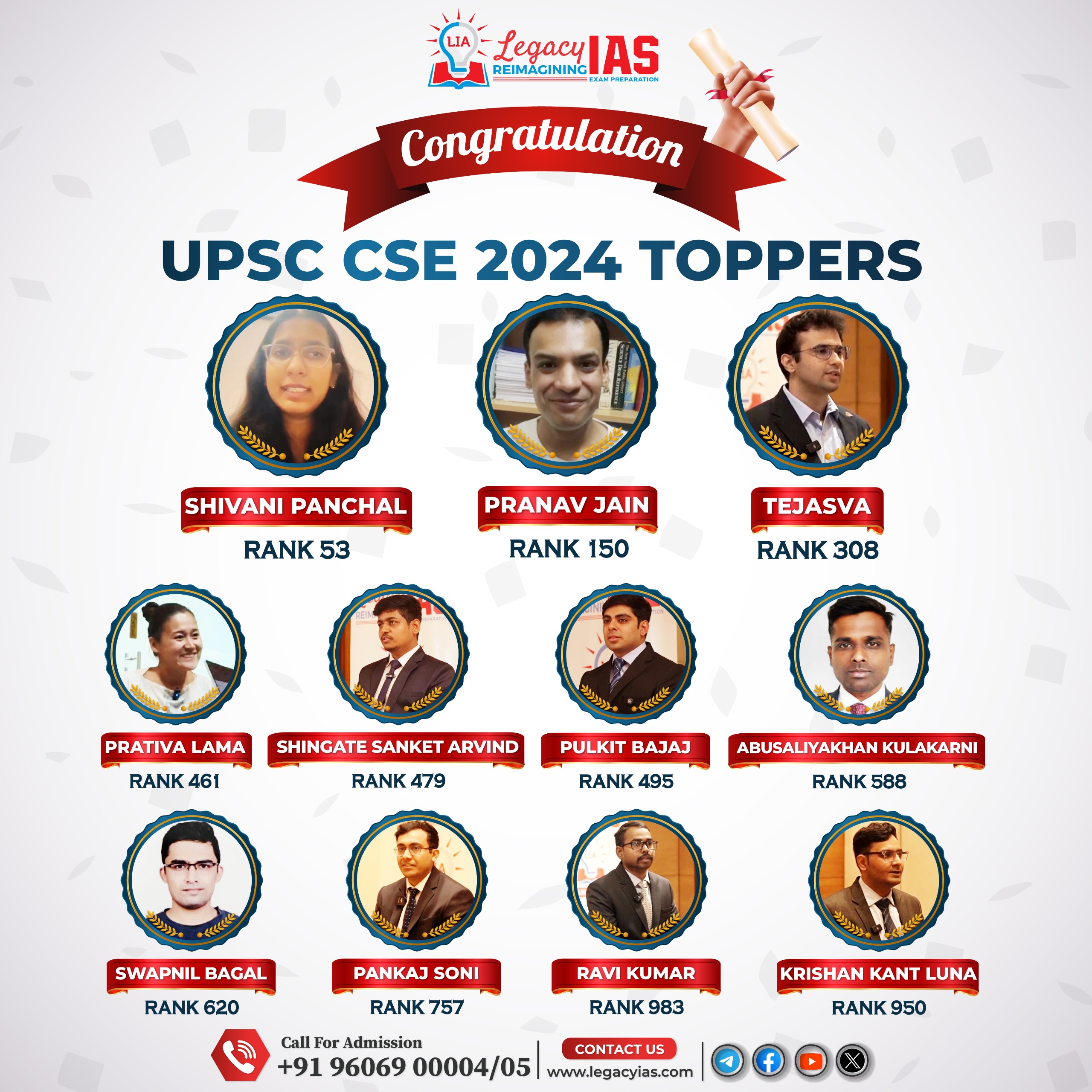Ease of doing business is key to entrepreneurship, innovation and wealth creation. India has risen significantly in the World Bank’s Doing Business rankings in recent years, but there are categories where it lags behind – Starting a Business, Registering Property, Paying Taxes and Enforcing Contracts.
For example, registering property in Delhi and Mumbai takes 49 and 68 days respectively, while it takes 9 days in China and 3.5 days in New Zealand.
Export competitiveness depends not only on the cost of production but also on the efficiency of logistics.
The process flow for imports, ironically, is more efficient than that for exports! In contrast, however, the imports and exports of electronics through Bengaluru airport were found to be world-class.
- The processes of Indian airports should be adapted and replicated in sea-ports.
Introduction:
As India leapfrogs towards a five trillion-dollar economy by 2024-25, simplifying and maintaining a business friendly regulatory environment is essential.
- India has made substantial gains in the World Bank’s Doing Business rankings from 142 in 2014 to 63 in 2019.
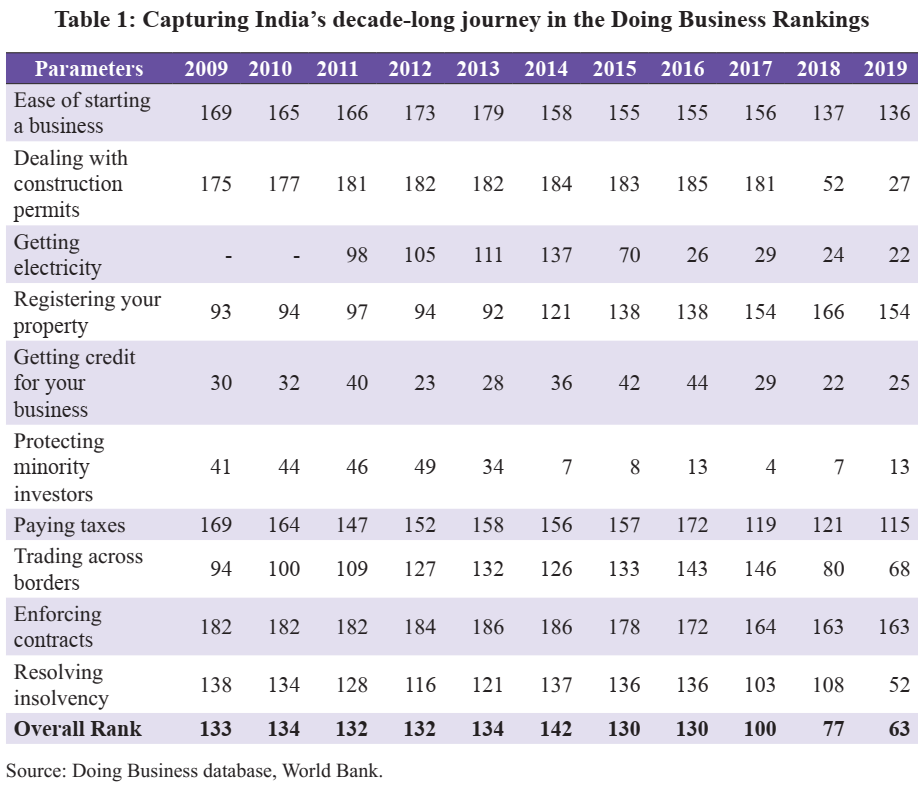
- It has progressed on seven out of the 10 parameters. The Goods and Service Tax (GST) and the Insolvency and Bankruptcy Code (IBC) top the list of reforms that have propelled India’s rise in rankings.
- However, India continues to trail in parameters such as Ease of Starting Business (rank 136), Registering Property (rank 154), Paying Taxes (rank 115), and Enforcing Contracts (rank 163).
- It takes roughly 58 days and costs on an average 7.8% of a property’s value to register it, and 1,445 days for a company to resolve a commercial dispute through a local first-instance court.
Global Comparisons
Setting up a business:
- The number of procedures required to set up a business in India, for example, has reduced from 13 to 10 over the past ten years.
- Today, it takes an average of 18 days to set up a business in India, down from 30 days in 2009.
- On the other hand, New Zealand has a seamless process of business incorporation which takes place through a single-window via one agency. It just takes half-a-day with a single form and minimal cost to set up a business in New Zealand.
- In fact, countries like Pakistan, Turkey and Sri Lanka (ranked 72, 77, and 85 respectively in Starting a Business parameter) have a less cumbersome process to start a business than India.
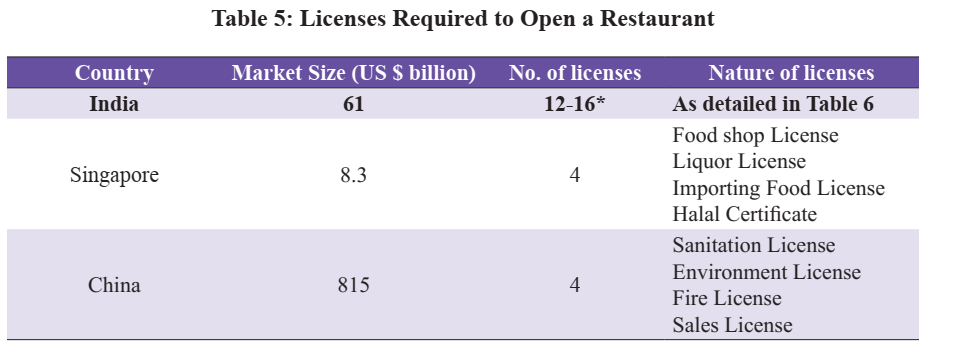
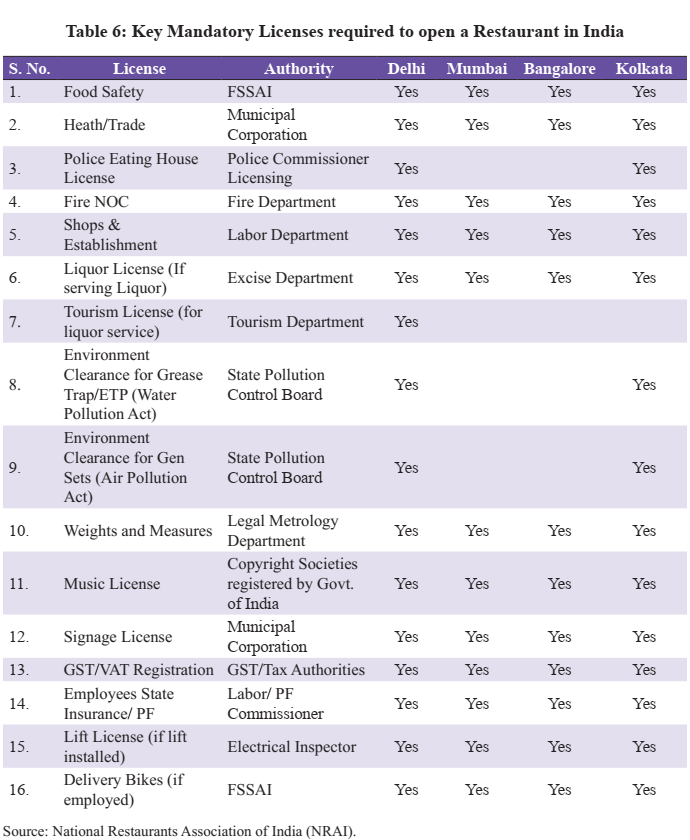

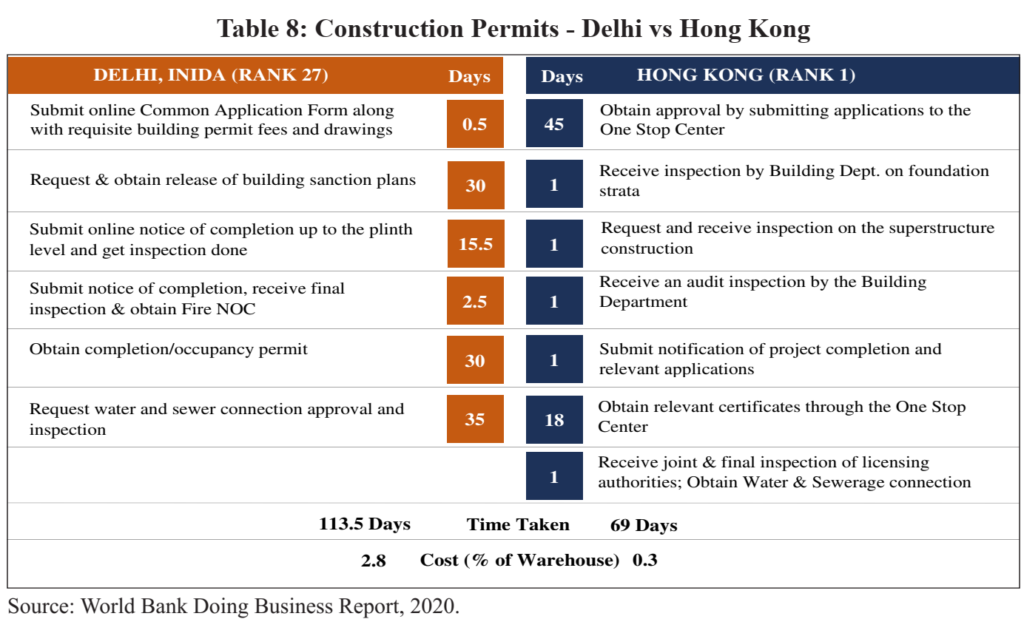
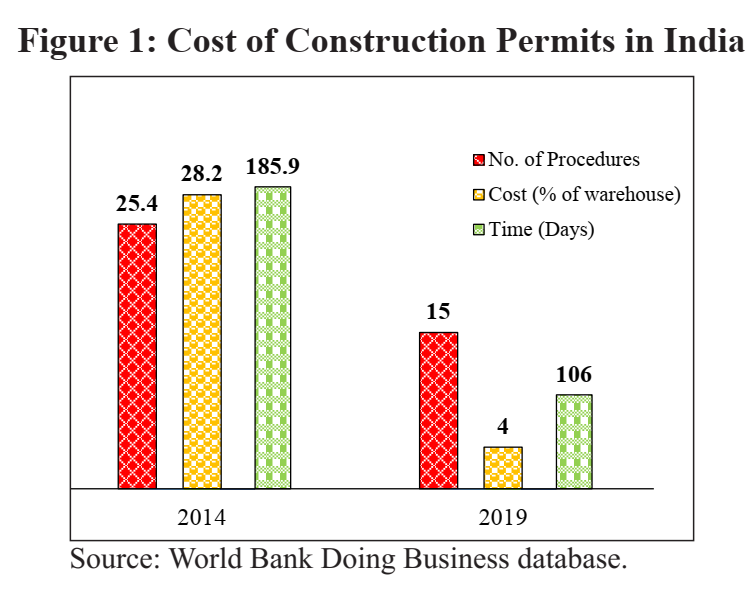
Paying Taxes:
- The number of payments per year has significantly reduced in India from 59 to 12 over the last decade, time spent on this activity has not reduced much.
- While India takes 250-254 hours per year to pay taxes, New Zealand spends just 140 hours a year. Interestingly, the time spent to pay taxes in New Zealand has doubled from 2009 to 2019.
Enforcing contracts:
- India takes 1,445 days to resolve an average dispute, New Zealand takes approximately one-seventh of it, i.e., 216 days.
- As mentioned in last year’s survey, the single biggest constraint to ease of doing business in India is its inability to enforce contracts and resolve disputes.
- Given the potential economic and social multipliers of a well-functioning legal system, this may well be the best investment India can make.
Density of Legislation and Statutory Compliance Requirements in Manufacturing
- A major challenge – complex architecture of the Indian governance framework including the density of legislation and statutory compliance requirements.
- Manufacturing units — have to conform with 6,796 compliance items
Construction Permits
Hong Kong, which tops the World Bank rankings for ease of obtaining construction permits, it can be seen that Hong Kong takes just over two months to obtain a construction permit, while Delhi takes almost four months. Moreover, it takes 35 days to get water and sewer connection in Delhi — after a significant improvement since 2014
Achieving Scale Across Business
- Most of the manufacturing units in India have small capacities and consequently low manufacturing efficiencies which are a disadvantage in the global supply chain.
- Countries like Bangladesh, China, Vietnam are able to progress in the value chain by increasing their competitiveness in the international market by improving their delivery time and domestic production capacity.
- Compared to Bangladesh, China, and Vietnam, which have more than 80% of the market value of exports by large enterprises, India has 80% by small enterprises.

Trading Across Borders
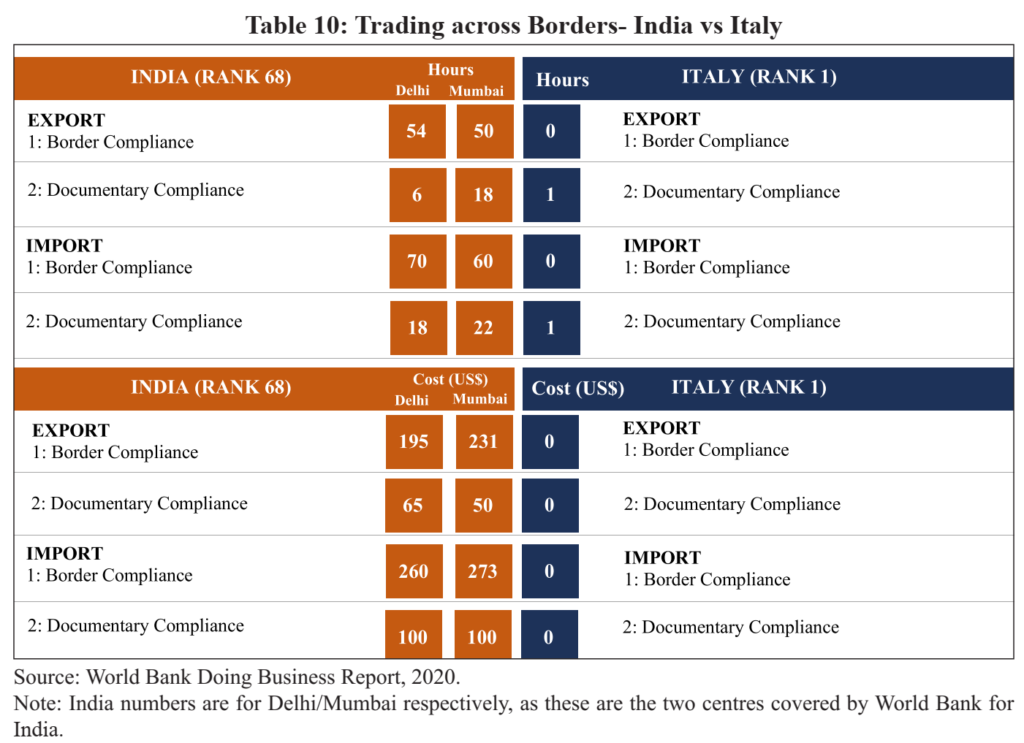
The Trading Across Borders indicator records the time and cost associated with the logistical process of exporting and importing goods.
- Globally, transportation by ports is the most favoured followed by railways and then roads, whereas in India it is the opposite.
- Italy tops the EoDB rankings in Trading Across Borders.
- It must be noted that almost 70% of the delays (both in exports and imports) occur on account of port or border handling processes which essentially pertain to procedural complexities — pushing up the cost to trade.
- The government has reduced procedural and documentation requirements considerably — digitization and multiple agencies on a single platform can further reduce
Authorised Economic Operators (AEO)
It is a programme under the aegis of the World Customs Organization (WCO) SAFE Framework of Standards to secure and facilitate global trade.
- The programme aims to enhance the international supply chain security and facilitate the movement of goods.
- Under this programme, an entity engaged in international trade is approved by Customs as compliant with supply chain security standards and granted AEO status — meaning a reliable partner
- AEO is a voluntary programme.
- Can apply for AEO status irrespective of the size of the business.
- Businesses include — exporters, importers, logistics providers (for example, carriers, airlines, freight forwarders, etc.), custodians or terminal operators, customs house agents, and warehouse owners.
- Benefits include expedited clearance times, fewer examinations, improved security and communication between supply chain partners.
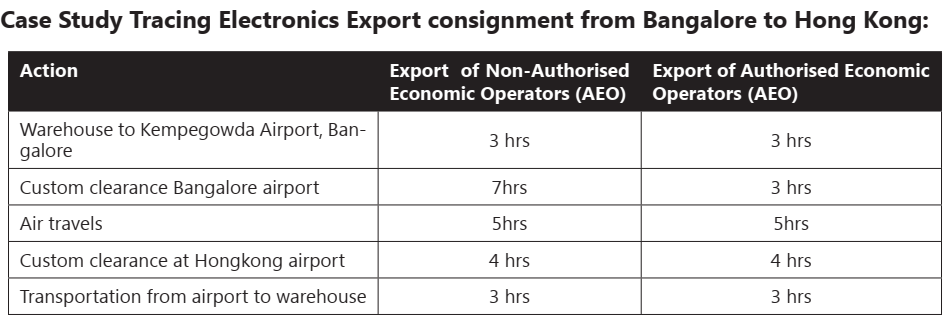
- The processes in Indian airports are vastly superior to those at seaports for both imports and exports;
- AEO did significantly improve the process but it is reasonably smooth even for non-AEO operators importing/ exporting electronics;
- Indian processes can beat international standards
Eligibility criterion for AEO Programme
- They have handled 25 Import or Export documents in the last Financial Year.
- Business activity for the last three Financial Year (can be waived in deserving cases).
- Financially Solvent for the last three financial years.
- Not be issued a show-cause notice involving ‘fraud, forgery, outright smuggling, clandestine removal of excisable goods etc during last three financial years.
INDIA’S PERFORMANCE IN LOGISTICS
In total 41, days taken by the consignment from the factory in Delhi to a warehouse in Maine, 19 days were spent in India (mostly in JNPT), 19 days at sea and roughly three days in the United States.
This is partly due to insufficient port infrastructure to handle the inflow of containers, narrow roads and poor strength bearing capacity of the roads at the port.
The following were the outcomes:
- the inordinate delays in loading and customs processes in Indian sea-ports
- the processes for imports, ironically, are better than those for exports
- the large variance in process time means that exports are forced to account for the uncertainty by padding extra waiting time.
- It must be noted that the turnaround time of ships in India has been on a continuous decline, almost halving from 4.67 days in 2010-11 to 2.48 days in 2018-19
Conclusion
The streamlining of the logistics process at sea-ports requires close coordination between the Logistics division of the Ministry of Commerce and Industry, the Central Board of Indirect Taxes and Customs, Ministry of Shipping and the different port authorities.
- The simplification of the Ease of Doing Business landscape of individual sectors such as tourism or manufacturing, however, requires a more targeted approach that maps out the regulatory and process bottlenecks for each segment.
- Once the process map has been done, the correction can be done at the appropriate level of government – central, state or municipal.
MCQs
- Consider the following statements:
1- It takes an average of 18 days to set up a business in India currently.
2- India takes 1,445 days to resolve an average dispute.
Which of the above statements is/are correct?
A. 1 only
B. 2 only
C. Both 1 and 2
D. Neither 1 nor 2
Ans. (C) The number of procedures required to set up a business in India, for example, has reduced from 13 to 10 over the past ten years. Today, it takes an average of 18 days to set up a business in India, down from 30 days in 2009.
Enforcing contracts is one parameter in which India’s performance has been very poor over the years. While India takes 1,445 days to resolve an average dispute. With a rank of 163 out of 190 nations in Enforcing Contracts, only a few countries like Afghanistan, Mozambique, and Zimbabwe perform worse than India. - With reference to the Authorized Economic Operator (AEO) program, consider the following statements:
1- It seeks to enhance international supply chain security and facilitate the movement of legitimate goods.
2- It is an initiative of the World Trade Organization.
Which of the statements given above is/are correct?
A. 1 only
B. 2 only
C. Both 1 and 2
D. Neither 1 nor 2
Ans. (A) Authorized Economic Operator (AEO) is a voluntary program under the aegis of the World Customs Organization (WCO) SAFE Framework of Standards to secure and facilitate Global Trade. Hence, statement 2 is not correct.
•The programme aims to enhance international supply chain security and facilitate movement of legitimate goods. Hence, statement 1 is correct.
•AEO encompasses various players in the International supply chain.
•Under this programme, an entity engaged in international trade is approved by Customs as compliant with supply chain security standards and granted AEO status & certain benefits. It enables custom authorities to enhance and streamline cargo security through close cooperation with the principle stakeholders of the international supply chain viz. importers, exporters, logistics providers, custodians or terminal operators, custom brokers and warehouse operators.

